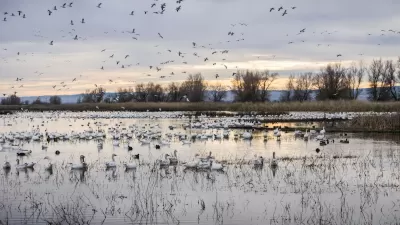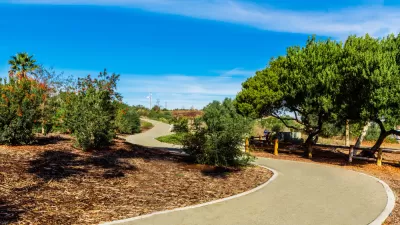When the U.S. Army Corps of Engineers announced its preference for a $1.08 billion plan to restore habitat in the Los Angeles River, many credited Lewis MacAdams's fight to change the city's relationship with its waterway over nearly three decades.

Despite its history as the ecological feature around which original Angelenos formed their settlement, the Los Angeles River has long been a concrete-encased flood control channel. That is now changing. On May 28, the Army Corps of Engineers announced that it would recommend Alternative 20 as its preferred approach for revitalizing the Los Angeles River. The decision, which marked a significant change from the Corps’ original plan to support the half-as-ambitious Alternative 13, was cause for Lewis MacAdams to celebrate. His non-profit, Friends of the Los Angeles River, began calling for river revitalization starting in 1986.
In an exclusive conversation with The Planning Report, MacAdams gives an overview of Alternative 20 and provides insight into the long process that brought about the Army Corps’ announcement--focusing on changing relationships between local, state, and federal players. In light of California's state-wide drought, he notes the relationship between water recycling and flow in the river. MacAdams also identifies the recreational activities already taking place there, and the opportunities soon possible due to the recent decision.
In his words, "The thrilling part of it for me, personally, is that Alternative 20 begins to fulfill some of my own goals from when I started Friends of the Los Angeles River. We will start to see habitat restored. When people ask me, 'How will you know when your work is done?' I always say, 'When the steelhead trout run returns to the Los Angeles River.' This won’t directly make that happen, but it’s a big step toward it."
FULL STORY: Lewis MacAdams on Army Corps’ LA River Revitalization Alternative 20

Study: Maui’s Plan to Convert Vacation Rentals to Long-Term Housing Could Cause Nearly $1 Billion Economic Loss
The plan would reduce visitor accommodation by 25,% resulting in 1,900 jobs lost.

North Texas Transit Leaders Tout Benefits of TOD for Growing Region
At a summit focused on transit-oriented development, policymakers discussed how North Texas’ expanded light rail system can serve as a tool for economic growth.

Why Should We Subsidize Public Transportation?
Many public transit agencies face financial stress due to rising costs, declining fare revenue, and declining subsidies. Transit advocates must provide a strong business case for increasing public transit funding.

How to Make US Trains Faster
Changes to boarding platforms and a switch to electric trains could improve U.S. passenger rail service without the added cost of high-speed rail.

Columbia’s Revitalized ‘Loop’ Is a Hub for Local Entrepreneurs
A focus on small businesses is helping a commercial corridor in Columbia, Missouri thrive.

Invasive Insect Threatens Minnesota’s Ash Forests
The Emerald Ash Borer is a rapidly spreading invasive pest threatening Minnesota’s ash trees, and homeowners are encouraged to plant diverse replacement species, avoid moving ash firewood, and monitor for signs of infestation.
Urban Design for Planners 1: Software Tools
This six-course series explores essential urban design concepts using open source software and equips planners with the tools they need to participate fully in the urban design process.
Planning for Universal Design
Learn the tools for implementing Universal Design in planning regulations.
City of Santa Clarita
Ascent Environmental
Institute for Housing and Urban Development Studies (IHS)
City of Grandview
Harvard GSD Executive Education
Toledo-Lucas County Plan Commissions
Salt Lake City
NYU Wagner Graduate School of Public Service





























